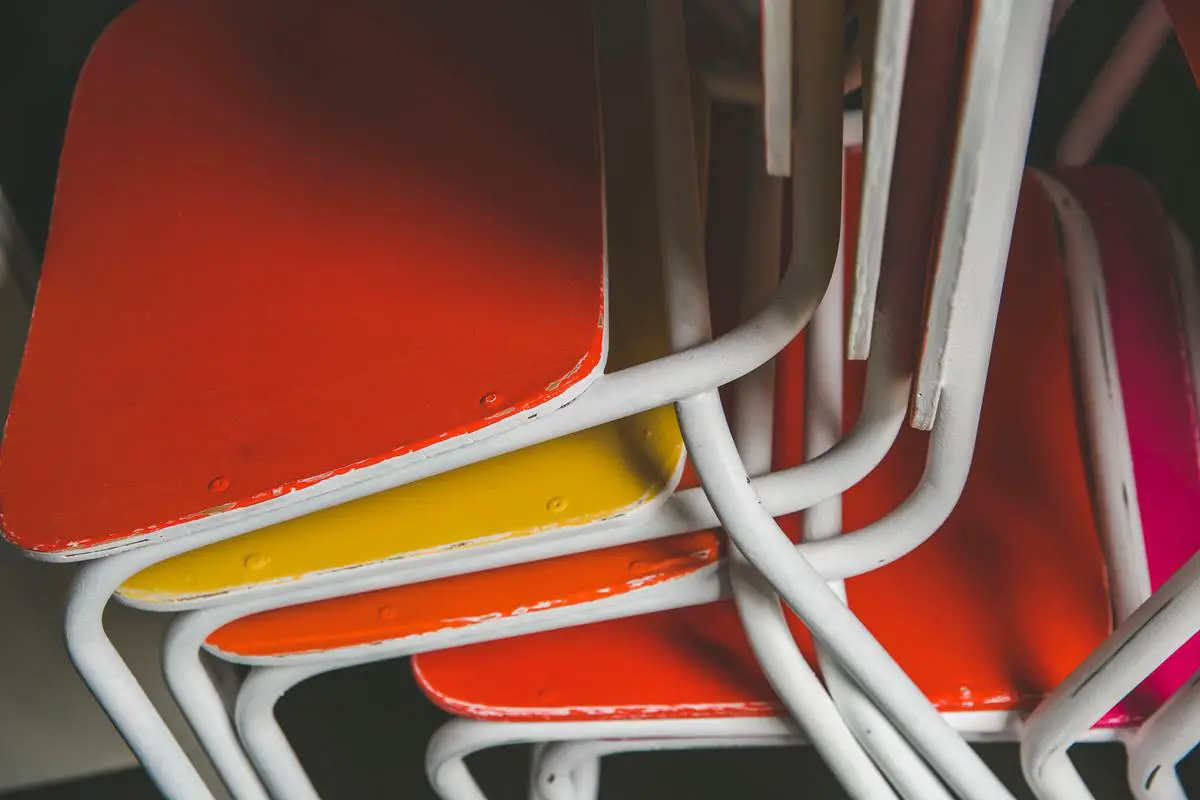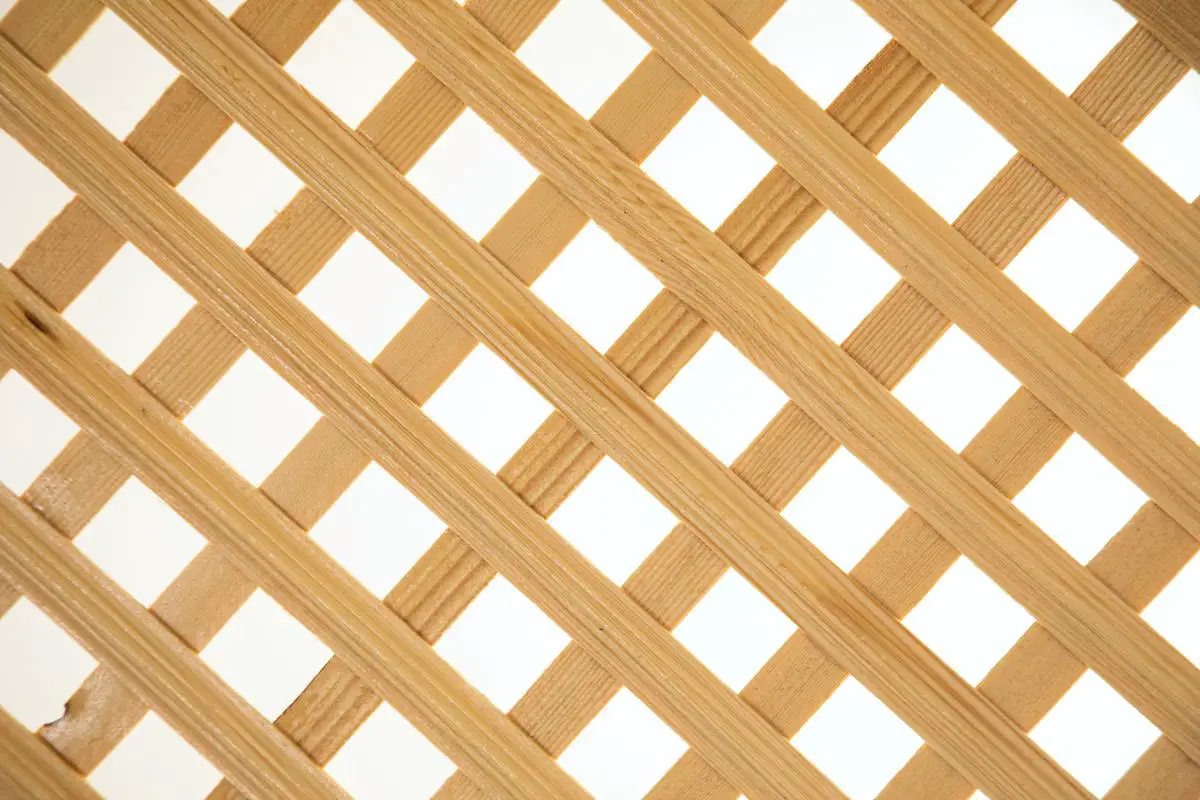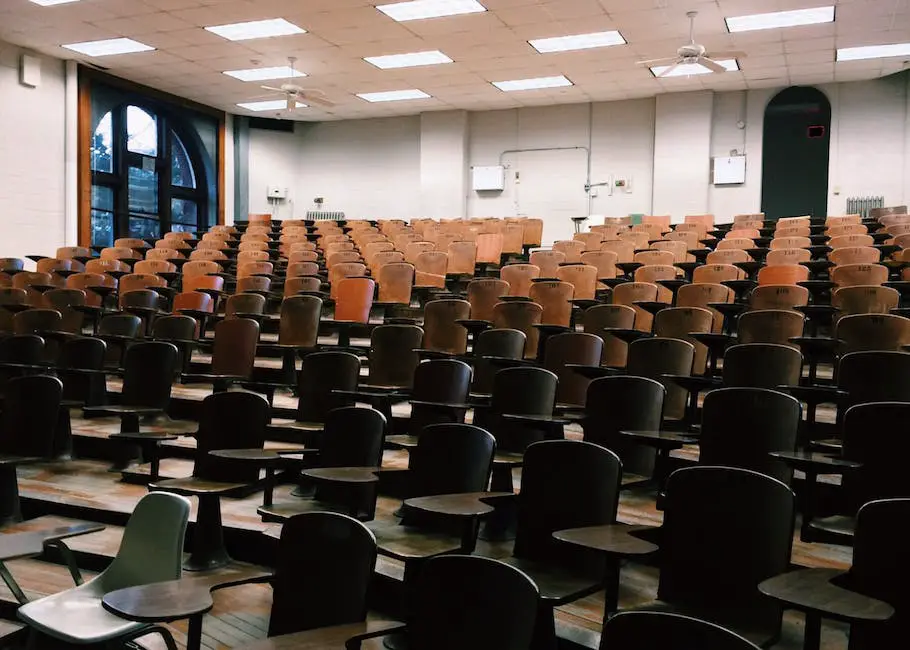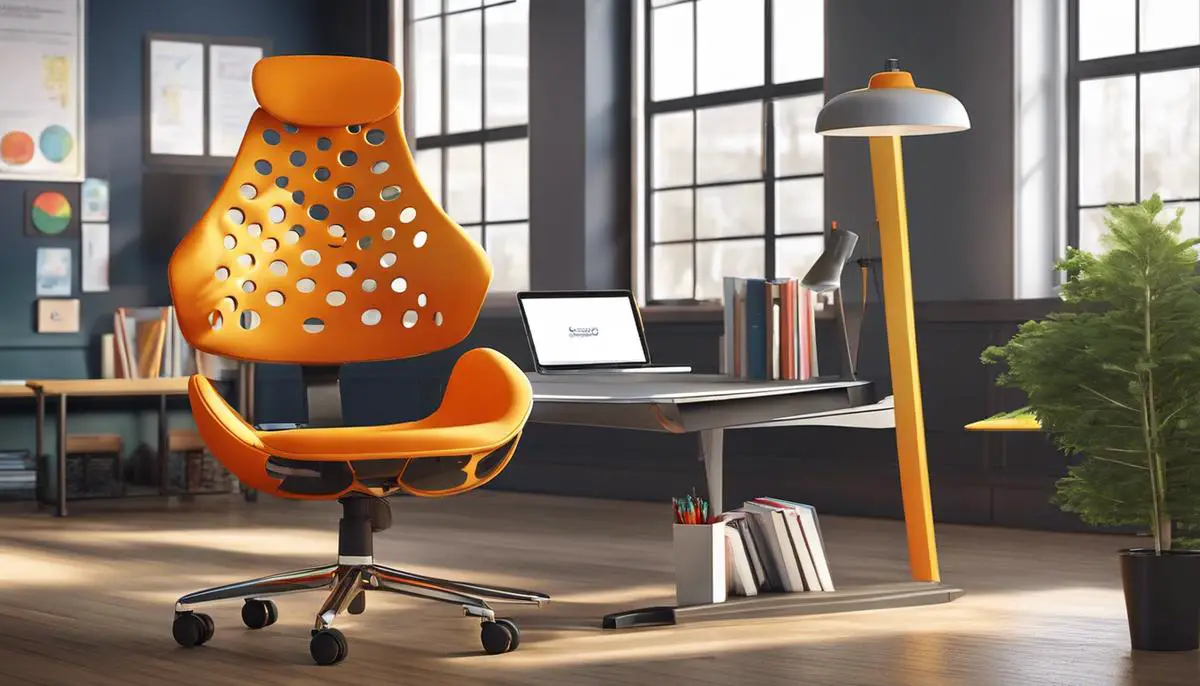The design of school chairs may seem like a trivial detail in the wider context of educational settings, but a closer inspection reveals a confluence of thoughtful engineering and savvy materials science aimed at enhancing the learning experience. Each hole in a school chair is not merely a random perforation; it is the result of meticulous ergonomic design intended to promote comfort and maintain correct posture for students who spend a significant portion of their day seated. Understanding the fusion of ergonomic principles with the demands of a dynamic educational environment sheds light on the importance of these design choices. Simultaneously, this design feature threads into the narrative of material efficiency and sustainability, echoing a growing consciousness about the resources we use and the impact of our manufacturing practices on the environment.
Table of Contents
Ergonomic Design and Comfort
Ergonomic design in school furniture has increasingly become a focal point for enhancing student comfort and engagement. A feature of particular interest is the incorporation of holes in the seat backs of chairs. These perforations play an essential role in improving the physical well-being of students and the functionality of the classroom environment.
The strategic placement of these holes serves multiple ergonomic purposes. Firstly, they reduce the weight of the chair, facilitating easier movement and reconfiguration of classroom spaces. This supports dynamic teaching methods and allows for the adaptive use of classrooms. More critically, the holes improve airflow, reducing heat and moisture buildup that can lead to discomfort and reduced attention spans over long periods of sitting. This is especially valuable in environments where air conditioning may be limited or in climates prone to high temperatures.
Moreover, the holes assist in the distribution of body pressure. When students lean against the chair back, the pressure is not solely concentrated in the contact points between their backs and the rigid chair surface. Instead, it is dispersed, decreasing the likelihood of circulatory problems and muscle fatigue. Additionally, this feature can mildly flex, providing a subtle range of motion that alleviates static posture and encourages micro-movements. These small, frequent adjustments are crucial for maintaining spinal health and preventing discomfort, enabling students to maintain focus and actively participate in their educational experiences.

Material Efficiency and Sustainability
Beyond the ergonomic benefits derived from the perforations in school chairs, one must consider the implications such designs have on material efficiency and environmental sustainability. The integration of holes in these chairs enables a substantial decrease in the amount of raw materials utilized during the manufacturing process. When less material is required per unit, the ripple effects are far-reaching: raw material extraction is lessened, which not only conserves resources but also minimizes the associated environmental degradation, such as habitat disruption and pollution.
Furthermore, the holes contribute to a reduction in the overall weight of each chair, which has a significant impact on transportation logistics. Lightweight chairs allow for a greater quantity to be shipped simultaneously, thereby reducing the number of trips needed and, in turn, cutting down on fuel consumption and greenhouse gas emissions. This is an essential element in the strive for greater sustainability, as the transportation sector remains a major contributor to carbon emissions globally.
The concept of life cycle assessment is also pertinent when discussing these material-efficient designs. A chair that requires fewer resources for production is inherently more sustainable. Additionally, the ease of handling and the durability provided by designs that include these holes contribute to an extended lifespan for school furniture. As such, the need for frequent replacements is diminished, which sustains resources and reduces waste. By considering the complete lifecycle of school furniture, from material sourcing to eventual disposal, the adoption of hole-inclusive designs plays a surprisingly significant role in advancing environmental sustainability in educational institutions.

Photo by lukemarshallimages on Unsplash
Acoustic Considerations
Delving further into the design features of school furniture, an oft-overlooked aspect is the acoustic impact of perforated chairs on the classroom environment. Acoustic comfort is a pivotal component of an effective learning space; however, it is a subject that traditionally garners less attention compared to physical ergonomics. Holes in school chairs, which primarily serve ergonomic and material efficiency purposes, also play a nuanced role in influencing the acoustic properties of a classroom.
The presence of holes in chair design can affect sound reflection and absorption. Sound waves, upon encountering solid surfaces, are either absorbed, reflected, or diffused. Perforations in chair backs introduce a variable that can diffuse direct sound waves, potentially reducing echo within a classroom setting. This is of particular importance as clarity of speech is a cornerstone of effective teaching and learning. The diffusive nature of a perforated chair pattern can contribute to a reduction in sound reverberation, which in turn may lead to a more acoustically pleasing environment that facilitates better comprehension and retention of spoken information.
However, it is crucial to underscore that the extent to which these perforations affect classroom acoustics is contingent on a multitude of factors including, but not limited to, the size and shape of the holes, the material from which the chairs are constructed, the spatial arrangement of the chairs in the classroom, and the overall acoustic design of the room itself, including wall materials and floor coverings. It is paramount that educational institutions seeking to optimize their acoustic environments consult with acoustic experts to understand these dynamics thoroughly and strive for the most harmonious integration of ergonomic design and acoustic performance. The interplay between material efficiency, ergonomic functionality, and acoustic optimization demonstrates the complexities inherent in designing environments conducive to educational excellence.

Photo by enginakyurt on Unsplash
Maintenance and Durability
The integration of holes into the fabrication of school chairs does not solely confer ergonomic advantages; it also extends the service life of these essential pieces of educational infrastructure. Chairs designed with perforations are intrinsically more resilient to the conventional stresses imparted by daily use. Without solid, monolithic structures, these chairs are less susceptible to cracking under force due to the even distribution of stress across their more flexible surfaces. Consequently, the incorporation of meticulously engineered holes into school chairs fosters a prolonged lifespan, obviating the necessity for frequent replacement cycles and significantly diminishing resource wastage in educational settings.
Moreover, the synthesis of material efficiency with durability stands as a testament to the environmental stewardship inherent in such design choices. Enhanced durability translates into a delayed turnover rate of furniture, thus conserving natural resources by minimizing the demand for raw materials. The broader ecological footprint of school furniture encompasses not just the initial raw material extraction and processing, but also the eventual disposal of the product at the end of its life cycle. By adopting chair designs which sustain their structural integrity and usefulness over longer periods, educational institutions contribute to a reduction in the quantum of waste funneling into landfills, thereby espousing sustainable practices that resonate well beyond the confines of the classroom.
In summary, the strategic placement of holes in school chairs offers a multi-faceted array of benefits that transcend mere comfort and usability. These designs are emblematic of a conscientious approach to resource stewardship and an acute awareness of the environmental ramifications of educational furniture. The long-term maintenance, durability, and sustainability afforded by this design advance nourish a robust academic environment primed for both immediate pedagogical success and future ecological harmony.

With the insights drawn from exploring the multi-faceted rationale for the holes in school chairs, one can better grasp the depth of consideration given to everyday objects in educational spaces. From the ergonomically-friendly design that supports student well-being to the sustainable practices reflected in material conservation, these chairs are silent yet powerful contributors to the learning milieu. The subtle interplay between acoustics and maintenance, coupled with the crucial role in enhancing durability, underscores the importance of nuanced design. This examination illustrates the interconnectedness of ergonomic, environmental, and practical needs that culminate in the optimized design of school furniture, shaping the backdrop against which the future generation learns and grows.

After sitting in a back breaking office chair for hours every day at his job, William Burch got the idea to start the Recliners Hunt website. William is focused on ergonomic chair design – as it is more important than ever today since we are spending more and more time sitting at our computers.


